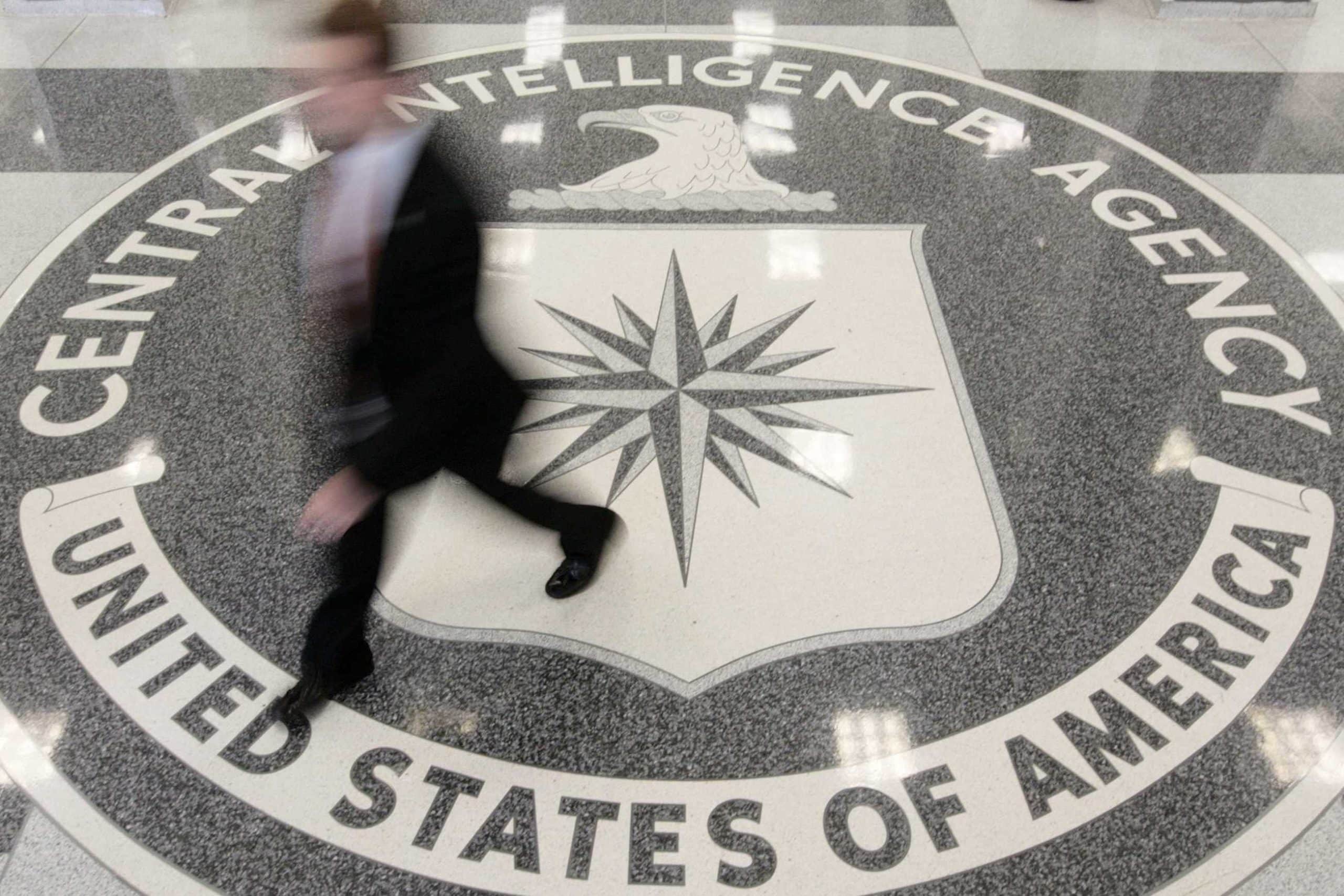The CIA: spies, secret wars, arms deals, assassins, regime changes, and, of course, abstract art. Yes, you read that correctly. By now it’s no secret that the CIA was indirectly involved with Abstract Expressionism in the 1950s, secretly promoting and financing the works of artists like Jackson Pollock, Robert Motherwell, and Willem De Kooning.
It was an odd marriage in a number of ways. Many of the artists promoted by the CIA had communist leanings and were openly opposed to the CIA’s international activities. As for the CIA, supporting left-leaning artists during the height of the Cold War, particularly in the McCarthy era, was seemingly antithetical to their politics and mission.
So why the support? The CIA used the abstract expressionists’ works (unbeknownst to the artist’s themselves) as a propaganda tool, offering up the radical paintings as an example of American values and freedom, in sharp contrast to the aesthetically constrained Soviet Social Realism. The CIA’s program was ultimately successful (we all know how the story ends), and helped to foster Abstract Expressionism’s international acclaim with the traveling exhibition, “The New American Painting”.
The CIA’s relationship with abstract art extends beyond the ideological battles of the cold war and abstract expressionism. As it turns out, there is a decently sized collection of abstract works housed at the CIA’s George Bush Center for Intelligence in Virginia. The collection stems from a series of works that the CIA acquired from businessman, art collector, former Corcoran CEO, and all around Renaissance man Vincent Melzac.
Almost all of the paintings purchased from Melzac (without the artists’ knowledge, in keeping with tradition) were by artists affiliated with the Washington Color School—an art movement born in Washington D.C. in the late 50s that focused on orderly color fields and abstract patterns (an easy, if not slightly inaccurate, way to consider the Washington Color School is to imagine Abstract Expressionist works painted by robots or by algorithm).
Unsurprisingly, the CIA has kept their collection fairly secret. It was widely known that they owned abstract paintings, but requests for information were routinely ignored or denied. Recently, however, Carey Dunne, writing for Hyperallergic, was able to visit the CIA and view the collection (under close watch, of course). Thanks to her reporting, we are finally able to see the collection online (the CIA website only mentions one of the paintings: Gene Davis’s “Black Rhythm”).
Here’s a breakdown of the CIA’s favorite artists:
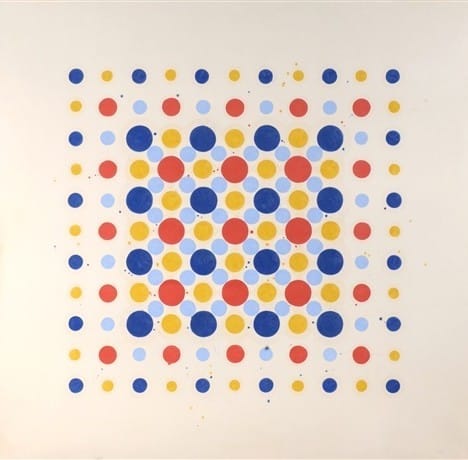
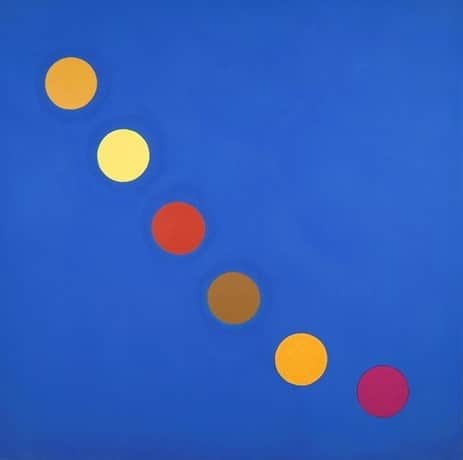
Thomas Downing, “Iambic Time”, 1962/63
Thomas Downing
Thomas Downing’s work primarily features dots, meticulously arranged, in subtle, muted color patterns. While many of his dot works are created as grids, with interlocking dots forming square patterns either radiating out from the center or uniformly spread across the canvas, some of his works feature dots more “loosely” arranged. Their seeming looseness, while still carefully plotted, can suggest a certain oceanic calmness, particularly “Iambic Time” (1963), with its subdued dots floating across a quiet blue.
The CIA’s collection features four of Downing’s paintings, including “Untitled” (1958-59) which saw Downing abandon the dot-grid format to paint a pure color field, much like a large detail of a Rothko painting.
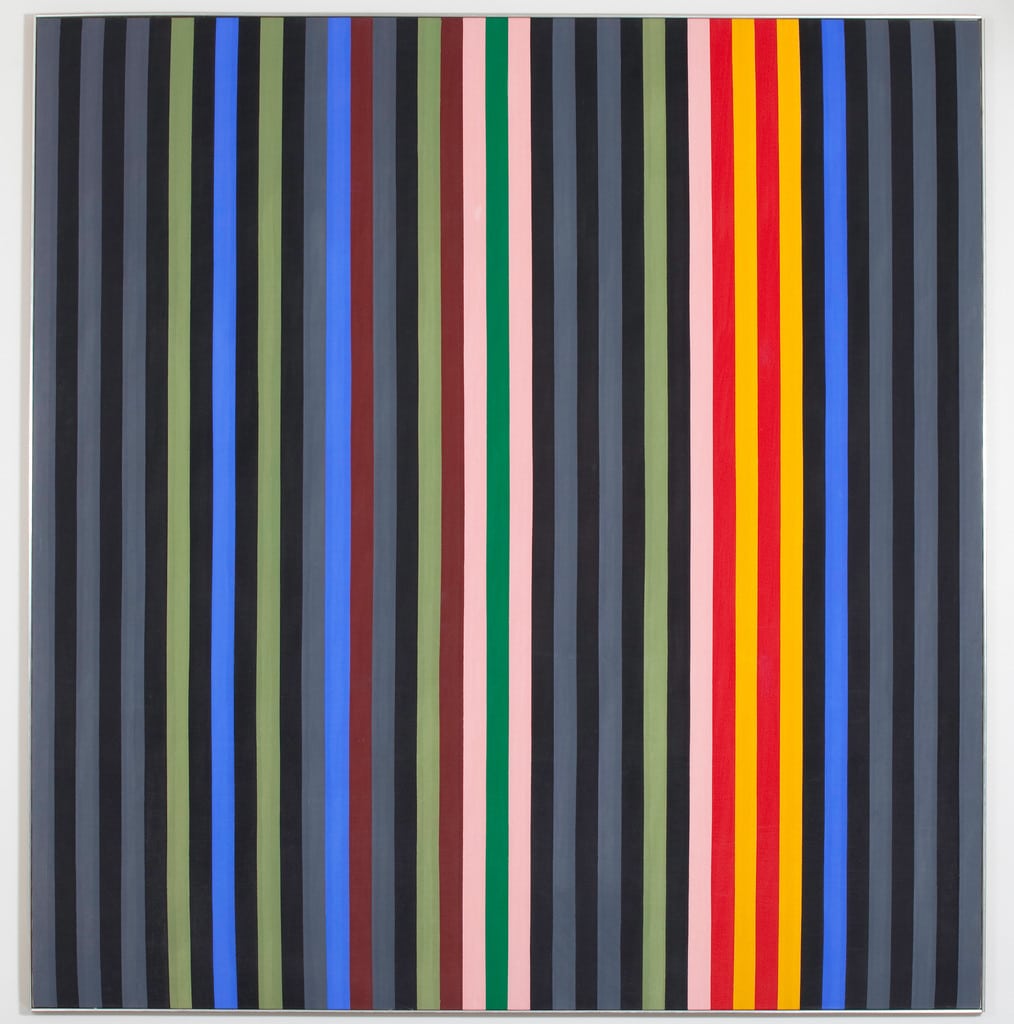
Gene Davis, “Black Rhythm”, 1964
Gene Davis
Gene Davis was born in Washington D.C. in 1920 and would spend the vast majority of his life in the city. Before beginning a career as an artist, Davis worked for a period as a journalist, covering the Washington Redskins as well as the Truman and Roosevelt administrations. He began painting in 1949 and would go on to be one of the founding members (insofar as the movement can be said to have “founders”) of the Washington Color School in the late 1950s.
Davis’s work primarily features stripes of different colors painted vertically across the canvas. The repetition of different colors within the pattern gives each painting a sense of rhythm, creating an illusion of disruption in the uniform spacing of the stripes. Indeed, Davis used to compare himself to a jazz musician, explaining his painting as “playing by eye” (as opposed to “by ear”).
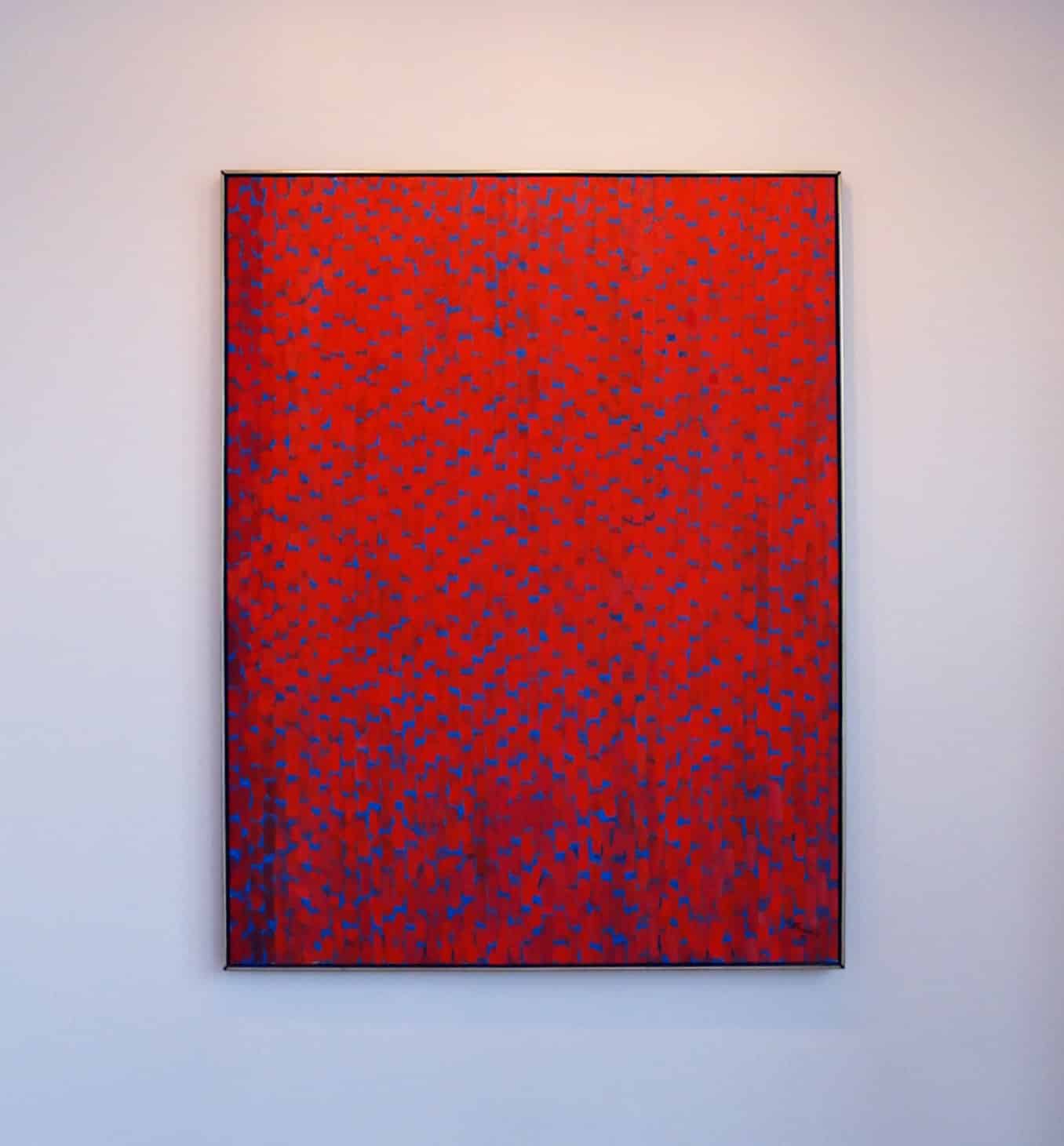
Alma Thoma, “Mars Reflection”, 1972
Alma Thomas
Though Alma Thomas, born in 1881, had been painting since the early 1920s, it wasn’t until she retired from her position as a teacher at Shaw Junior High in Washington D.C. in 1960 that her career as an artist began in earnest. After her retirement, Thomas enrolled in classes at American University and studied under painter Jacob Kainen, who introduced Thomas to the Color Field movement. Many of Thomas’s paintings, despite being two dimensional, have a certain materiality to them—with works like “Apollo 12 ‘Splash Down’” (1970) and “Stars and Their Display” (1972) suggesting a bricks or weaving, respectively. Thomas’ work was loosely associated with both the Washington Color School and Abstract Expressionism. In 1972 she became the first African American woman to have a solo show at the Whitney Museum of American Art.
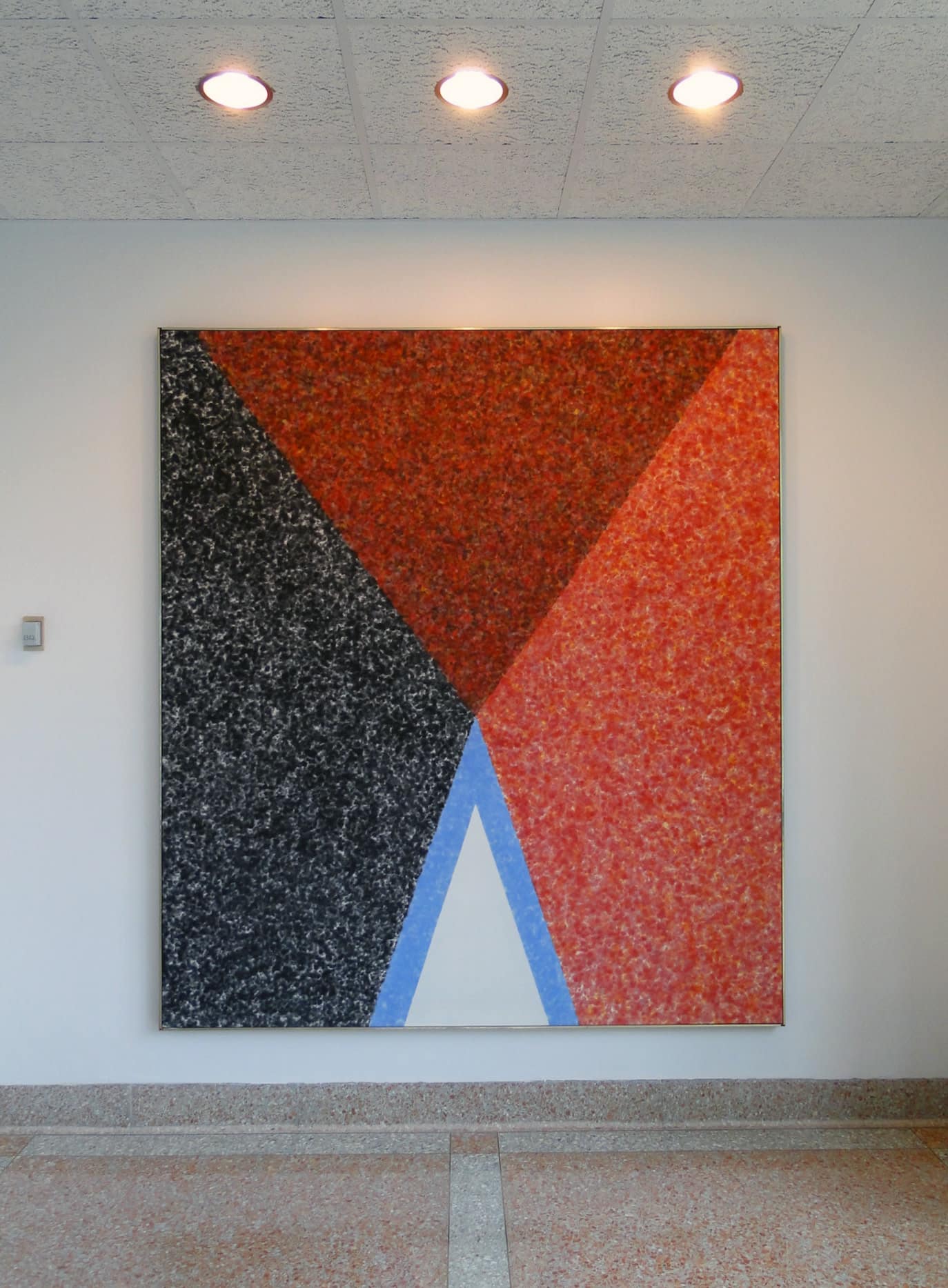
Howard Mehring, “Untitled”, 1960
Howard Mehring
One of the leading figures of the Washington Color School, Howard Mehring’s work underwent a radical change from the late 1950s into the 1960s. Mehring’s 50s and early 60s works, which coincide with founding of the Washington Color School, consist of dreamily speckled color fields and loose abstracts that frequently resemble deconstructed landscapes.
In the mid 60s, Mehring’s work took a left (right?) turn towards an aesthetic more in line with the Washington Color School. Replacing the freer paintings of the late 50s and early 60s were sharply arranged geometric shapes—right angles and patterned stripes. Of the three Mehring paintings in the CIA collection, two are of the earlier variety and one, “Untitled” (1960) offers a glimpse of an artist in transition, we see the geometric construction, but the triangular shapes are filled with fuzzy, warmer colors, suggesting Mehring’s previous works.
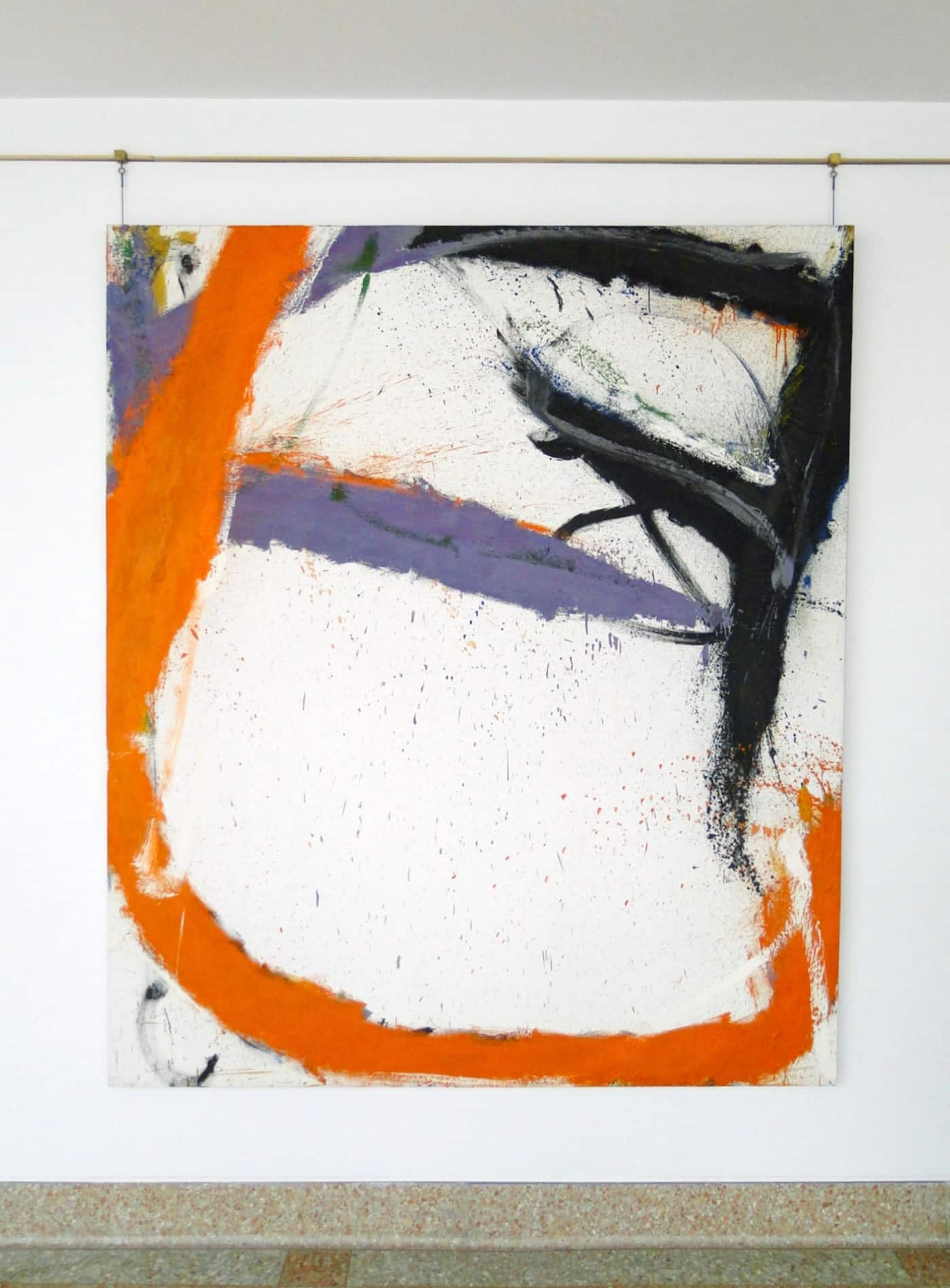
Norman Bluhm, “Inside Orange”, 1966
Norman Bluhm
Of all the artists in the CIA’s collection, only Norman Bluhm is not considered a member of the Washington Color School. Rather, Bluhm is most commonly associated with the Abstract Expressionists. According to James Harithas, the Director of The Station Museum in Houston, Bluhm’s work can be divided into four distinct periods. First, in the 1940s Bluhm painted surrealist inflected works, often featuring macabre imagery. In the 1950s Bluhm’s work took on a more abstract quality, with roughly textured bursts of color. Bluhm’s work in the 1960s features thick, angular, violent brush strokes, sparking across the canvas. Then, Bluhms late style, beginning in the 1970s, features suggestively erotic imagery with an Indian bent. “Inside Orange” (1966), the only Bluhm painting in the CIA collection, is by far the most hectic and energetic piece of the collection.
Discover other famous art collections:
A Guide to David Bowie’s Favorite Artists
A Guide to Amar’e Stoudemire’s Favorite Artists
Header image via Business Insider
